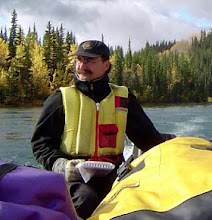 |
| NOT Shackleton's Hut at Cape Royds. This is actually Scott's place down the iceberg. Watch this space for the real Shackleton's hut coming soon. s. (Erin Neufeld photo) |
The heroic age of polar exploration in the first decade of the twentieth century witnessed a scramble amongst young European males to reach the extremities of the planet. While the First World War saw off the noble idea of individual heroism, there are still traces of this time that can capture our imagination.
 |
| Interior of the WRONG Hut. (Erin Neufeld photo) |
Earnest Shackleton undertook several voyages to the Antarctic. The 1909 expedition was remarkably well equipped with supplies to keep the large crew healthy and well fed. Amongst the kit were crates of brandy, champagne and Scotch whiskey. After over wintering at Cape Royd, Shackleton led an attempt to reach the South Pole. Upon his near success he told his wife Emily, a live donkey is better than a dead lion,
isn't it? and she gallantly replied, Yes darling, as far as I am concerned.
 |
| One of the crates thawing at the Canterbury Museum in Christchurch. (New Zealand Antarctic Heritage Trust) |
A century later curators of the New Zealand Antarctic Heritage Trust working on hut maintenance discovered stored items below the floor boards. They were amazed to find three crates of Mackinlay whiskey. As curators I'm sure they felt they'd discovered the holy grail of Antarctica. The crates were reverently packed and shipped to Christchurch for conservation at the Canterbury Museum where they, and the museum, survived two major earthquakes.
The self-discipline of these conservation professionals ranks at the same level as those heros of the exploration age. An archaeologist colleague of mine told me that the general practice with whiskey bottles in camp was to remove the caps and throw them immediately into a fire. Curators noted that a bottle was missing from one of the crates and assumed one of Shackleton's party couldn't resist a tipple. I suspect a Canadian archaeologist made it to the crate before the heritage trust as no sign of the cork was found.
 | |
| Scotch Whiskey has been popular in the Yukon since before Shackleton began his voyages. This ad is from the Dawson Daily News, March 25, 1938. |
Whyte & MacKay, Glasgow, the owners of the Mackinlay brand, jumped at the chance to work with the NZ Antarctic Trust. They were able to access several bottles and took minuscule samples to undertake the replication of the hundred year old Scotch. Some 50,000 bottles were produced with 5% of proceeds returned to the Heritage Trust for their work.
Remarkably ten of these bottles made it to the Whitehorse liquor store where our friend Mark acquired two. He then organized a "coffee break" and invited friends to join in the subtle and fine art of whiskey "tasting". I discovered this was quite different than the whiskey "drinking" I learned about in archaeology camp.
 |
| Mark genially bringing forth the bottle to begin the formal celebration of World Whiskey Day in Whitehorse. |
 |
| Lauren, our host for the whiskey tasting, carefully holds the replica box and bottle for a portrait. |
A whiskey tasting is an earnest and thoughtful affair. Each participant is provided with both a whiskey score sheet and a graphic analysis tool. Unfortunately I have misplaced mine so you can only read about it here. The score sheet has several characteristics to be considered, each with dozens of possible descriptors. With this in hand one pools a few drops of the whiskey on the tongue and considers its content. This pooling on the tongue might be repeated a few times until you have fully sorted the whiskey. I include below the distiller's taste guidelines so you can see what an educated palate can discern. For my part, I simply leaned back, closed my eyes and thought of the empire, and the whiskey corks burning in the fire.
The 47.3% ABV whisky has a light honey and straw gold colour with shimmering highlights. The nose is soft, elegant and refined
with delicate aromas of crushed apple, pear and fresh pineapple. It has a
whisper of marmalade, cinnamon and a tease of smoke, ginger and
muscovado sugar. The generous strength of the 47.3%
whisky, believed to be high to stop the alcohol freezing, gives plenty
of impact, but in a mild and warming way. It has whispers of gentle
bonfire smoke slowly giving way to spicy rich toffee, treacle and pecan
nuts. - Whyte & Mackay, Glasgow
The Shackleton Whiskey was delightful and warming. I'm sure it was a hit at Cape Royds too.







No comments:
Post a Comment